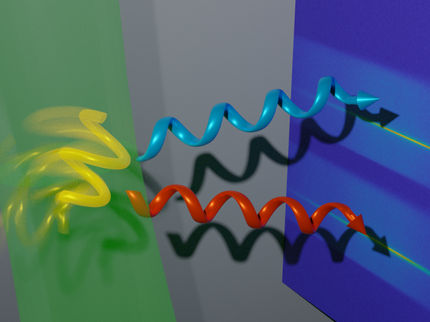A New Step towards "Computational Experiments"
Scientists develop the most advanced computer model to-date of the scattering of polarized light from chiral molecules
An international research team has described the first calculations of Raman optical activity (ROA) spectra using coupled-cluster theory – one of the most reliable quantum chemical methods available. ROA is a valuable tool for the structural characterization of a wide range of molecules, including large biomolecules such as viruses and proteins for which the technique holds a particular prominence. “We have developed the most advanced computer model to-date of the scattering of polarized light from chiral molecules”, says T. Daniel Crawford, researcher at Virginia Tech (USA), who carried out the simulations together with Kenneth Ruud of the University of Tromsø (Norway). chirality – or handedness – is a very important property in chemistry. The new results are presented in the journal ChemPhysChem.
A long-term goal of this area of research is to enable laboratory chemists to carry out their own simulations to study compounds ranging from small molecules to pharmaceuticals and viruses. “This will allow them to identify which ‘hand’ of the compound reacts in a desired way –from providing a certain scent to fighting tumors”, Crawford says. He points out that the model developed by him and his Norwegian colleague is capable of providing predictions of many molecular properties that equal –and sometimes exceed– the accuracy of even the best available experiments. Besides describing the fundamental theoretical aspects of the coupled-cluster functions used in the calculation of ROA spectra, Crawford and Ruud have demonstrated the effectiveness of their method through benchmark computations on (S)-methyloxirane –a compound for which experimental gas-phase data are available. Such rare experimental data, which are free of perturbative solvent effects, provide an excellent testing ground for advanced quantum-chemical methods.
According to the researchers, their future work will focus on more systematic comparisons between coupled-cluster ROA spectra and both density functional theory (DFT) and experiment, including more molecular examples. “Ultimately, we and the world's other quantum chemists seek to carry out ‘computational experiments’ that will provide reliable data more quickly, more safely, and with less expense than laboratory analyses”, Crawford adds.
Original publication

Get the analytics and lab tech industry in your inbox
By submitting this form you agree that LUMITOS AG will send you the newsletter(s) selected above by email. Your data will not be passed on to third parties. Your data will be stored and processed in accordance with our data protection regulations. LUMITOS may contact you by email for the purpose of advertising or market and opinion surveys. You can revoke your consent at any time without giving reasons to LUMITOS AG, Ernst-Augustin-Str. 2, 12489 Berlin, Germany or by e-mail at revoke@lumitos.com with effect for the future. In addition, each email contains a link to unsubscribe from the corresponding newsletter.























































